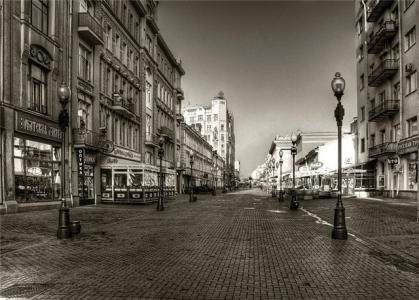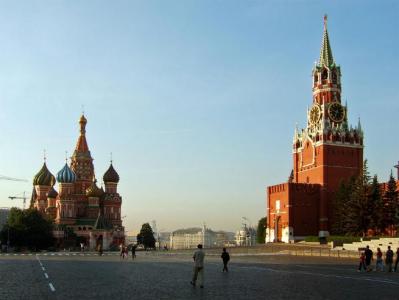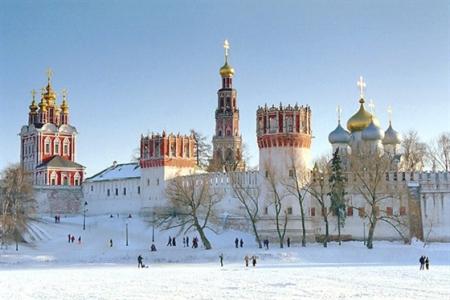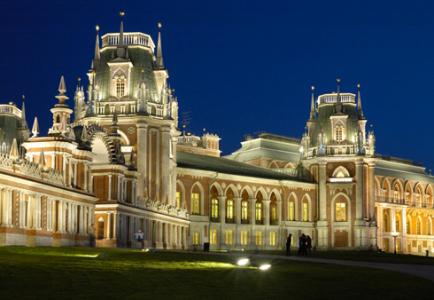|
Moscow is one of the oldest cities of the Russian state, which for centuries has been a center of accumulating huge amounts of cultural and historical values. Due to many generations of people who lived here and were interested in arts and history, lots of historical treasures and unique pieces of fine art, architecture and sculpture have preserved until our days. In this part of our website we would like to tell about those city sites, which we recommend most to be visited by our dear guests. Here also we are introducing the most attractive exhibitions, cultural, sportive events and entertainments, which you can find in Moscow, to make your stay unforgettable!  We are located on the Arbat Street, which we love so much, that’s why we would like our guests to learn about this area more. The Arbat – is one of the most known Moscow streets, it’s situated between the Arbat Square and the Smolenskaya Square. The Arbat street, which have become a symbol of an old Moscow, was immortalized in poems, prose, songs and in cinema. In our days we consider this name as a small street, which have become a pedestrian zone last years, but actually the Arbat is a historical district of Moscow that celebrated its 500th birthday in 1993. The Arbat street – is one of the most ancient streets in the Russian capital. Its exotic title comes from an Arabic word “arbad” (“rabad”), which mean “suburb”. Perhaps this word has been brought to Moscow by Crimea Tatars or Arabic merchants in 15th century. In the middle of 17th century there was a try to rename the Arbat street into Smolenskaya but the title didn’t find acceptance. From the beginning merchants and craftsmen were settling on the Arbat but by the end of 18th century noblemen pulled them away. In the 19th century there began a real Arbat boom: it has become fashionable and prestigiously to settle on the Arbat. The family names of Tolstoy, Rastopchin, Gagarin, Dolgorukiy, Kropotkin, which has left their traces in the Russian history, are all connected to the Arbat. It was a quite, “home” district: small mansions in the empire style and houses made of wood were being built here. There were almost no shops on the Arbat. Doctors, writers and lawyers were settling in the area. In different times A.Pushkin, S.Rahmaninov, A.Skryabin, N.Gogol, L.Tolstoy, M.Saltykov-Schedrin, A.Chekhov were living on the Arbat street or visiting it. The life of a theatre director E.Vahtangov and a history of the theatre named after him are inseparably linked with the Arbat. By the end of 19th century the Arbat street slowly began to get an appearance close to the contemporary. There have appeared three-floored houses, the number of shops has increased and a construction of multistory apartment houses has begun. In the Soviet times there were made irreversible changes in the appearance of the Arbat. In the beginning of 1960s the part of Kalinin avenue (later called The New Arbat) have been constructed right through the Arbat side streets. It led to destruction of many architectural monuments of the 18-19th century. Muscovites neatly called the new street “dentures”. In 1974-1986 the Arbat has turned into a pedestrian zone with lots of small shops, cafes and active street trading. Artists started to work here, street singers to perform, Russian souvenirs to be sold. The Old Arbat gained new popularity, mostly among visitors, because many of native muscovites interpreted such a change of the famous part of Moscow with critics. Bulat Okudzhava, who glorified the Old Arbat in lots of his songs and poems, told that “the Arbat went mad”, when he saw the new pedestrian zone lightened with lots of round street lamps. There are a museum apartment of A.Pushkin, museum houses of M.Tsvetaeva and M.Lermontov situated on the Arbat street now. Well preserved old small mansions with moulding, balconies and caryatids are the special attractions here. In the house №2 along the Arbat street the famous restaurant “Prague”, which has been established in 1872, is located. House №4 used to be owned by the noble family of Zagryazhskie – relatives of the Pushkin’s wife N.Goncharova. House №26 is occupied by the Vahtangov’s Theatre, this building was constructed on the place where an old mansion have been destroyed by a fallen bomb in 1941. Other houses attracting visitor’s attention are №11 which is decorated with lion’s masks and №35 with knights on the facade. These houses were built in the beginning of 20th century and represent tastes of their former owners. In the №43, built in the middle of 1930s, poets Andrey Bely and the mentioned Bulat Okudzhava were residing. The Moscow Kremlin, a wonderful historical and architectural monument, has already long ago turned into a symbol of not only Moscow but also of whole Russia. A unique and stately ensemble of The Kremlin rises in the centre of the capital on a Borovitsky hill. The word “kremlin” was used to call central reinforced part of a town in the historical Russia. The Moscow Kremlin, which has been wooden first, was first mentioned in the chronicle in 1156 as “The Kremlin Moscow”. In those times it occupied only the south-west part of the hill. In 1326-1327 on the highest point of the Borovitsky hill The Cathedral of the Dormition – the first stone cathedral of The Kremlin has been built. And in 1366-1368 under the government of a duke Dmitry Donskoy the first stone Kremlin has been constructed. With the rise of Moscow and the Moscow duchy an importance of The Kremlin was also increasing. From a usual citadel of the town it has become a residence of The Grand Duke of Moscow and a metropolitan. From 1955 The Kremlin was opened for visitors again. In 1961 near the Troitsky Gates on the place of a former armory chamber the Palace of Congresses (now called The State Kremlin Palace) has been built. It was the last big construction inside The Kremlin. In 1970-1980s the unique by its size restoration works has been done and in 1990 The Kremlin was included to the UNESCO World Heritage list. In 1991 the State historical and cultural museum and reserve “The Moscow Kremlin” has been created. It included the Armory Chamber, the Cathedral of the Dormition, the Cathedral of the Annunciation and the Cathedral of the Archangel, Church of the Deposition of the Virgin's Robe, museum of the applied art and the way of life of Russia in the 17th century, architectural ensemble of the Ivan the Great Bell Tower.  The Red Square – is a central square of Moscow. It’s located near the eastern wall of The Kremlin and enclosed from three sides by the State Historical Museum, the GUM’s building and the Saint Basil’s Cathedral. The Red Square for centuries has been a stage for important events of the Russian history. The Red Square appeared in the end of 15th century when tsar Ivan III ordered to demolish all wooden buildings around The Kremlin because of the constant threat of fires to the tsar’s residence. On their place near the eastern wall of the Kremlin Wall a square for small trade has been organized. Its first name was even “Trade square”, but in the 16th century it began to be called “Troitskaya”, because in the south part of it a Troitskaya Church (a Church of the Trinity) was situated. The title “Red Square” began to be used only in the 17th century. In purpose of defense in 1508-1516 a 12 meters deep moat has been dug in front of the Kremlin Wall and it connected the Moskva river to the Neglinnaya river. This moat, enclosed from both sides by walls, has been filled up only after 1812. In the north side of the square gates of the Kitay-Gorod were situated and in the eastern side there were lines of market buildings. In 1555-1560 in the south part of the Red Square, on a former place of the Troitskaya Church, The Cathedral of Intercession of Theotokos on the Moat (more known as the Saint Basil’s Cathedral) has been constructed by the Russian architects Barma and Postnik.  Saint Basil’s Cathedral is one of the most remarkable and famous monuments of the ancient Russian architecture. Already in 16th century the cathedral has been exciting travelers and guests of Moscow and for Russians it has become a symbol of the national history and the character. In 1552 to commemorate the victory of Ivan IV The Terrible in a conquest war with Kazan and Astrakhan Khanates there was started a construction of a cathedral consecrated in the honor of the Saint Trinity. In 1554 the tsar Ivan IV ordered to build a Cathedral of Intercession of Theotokos replacing it. Among the people this cathedral had also a name “Intercession over the Moat” as it was built near the deep moat stretched alongside The Kremlin Walls. Later in one of the cathedral’s parts a Fool Basil the Blessed has been buried and due to it the cathedral gained a new title.  25 December 1812, Tsar Alexander I signed a manifest, declaring his intention to build a Cathedral in an honor of the Russian victory over Napoleon’s army. The new cathedral should have become an embodiment of the Russian people’s feat and of "a gratitude to Divine Providence for saving Russia from the doom that overshadowed Her" The author of the first cathedral’s project is an architect Alexander Vitberg. By his plan it should have been constructed on the Sparrow Hills and consisted of three parts, linked with each other and symbolizing the Incarnation, the Transfiguration and the Ressurection. In the lower part of the cathedral it was planned to bury the bodies of soldiers died in combats of The Patriotic War of 1812. The Cathedral has been laid with a formal ceremony in 1817, but Vitberg’s plans have never been brought to life: The Hills were too insecure to stand such a weight and tsar Nicholas I who replaced Alexander I on the Russian throne, considered Vitberg’s project not realistic and bad. Instead of him in 1832 Konstantin Thon was introduced as a new architect of the cathedral. The first Cathedral of Christ the Saviour existed 48 years. The stately cathedral caused annoyance of the Soviet Government: it has been completely out of the new state ideology and widely propagated atheism. By the order of Joseph Stalin the first Cathedral of Christ the Saviour was dynamited on the December 5th 1931. On the place of the cathedral it was planned to build the Palace of Soviets – a giant tower crowned by the statue of V.I. Lenin. But the plans to build it were broken by the started World War II. In 1958-1960 the foundation pit for it was used to build an open air swimming pool called “Moscow”. The “Moscow” swimming pool existed 30 years. In the end of 1980s there appeared a social movement for reconstruction of the Cathedral of Christ the Saviour and in July 1992 The President of Russia B.N. Yeltsin confirmed an order to create a Fund of Moscow Reconstruction. In the lists of objects which must have been restored the first place held The Cathedral of Christ the Saviour. Due to the incredibly fast speed of construction the restored cathedral was consecrated in the year of 2000.  Novodevichy Convent is situated in the south-west of Moscow in a curve of the Moskva River. The ensemble of the Novodevichy Convent is an outstanding monument of the 16-17th century architecture. The most interesting building among the ensemble is the Smolensky Cathedral which is also called the Cathedral dedicated to the icon Our Lady of Smolensk, which has been built at the time of the convent foundation. This is a monumental five-domed cathedral with the frescos of 16-17th centuries, five-staged carved iconostasis and rare icons of the 17th century. The refectory building with the Church of the Dormition, bell towers, convent churches over gates, Mariinsky and Lopuhinsky chambers near them – are wonderful examples of the Moscow baroque. The Convent was found by the tsar Basil III in 1524 – to commemorate the return of Smolensk under the Russian government. From this it got another name – Bogoroditsa (Mother of God)-Smolensky Convent. In the 16-17th centuries the Novodevichy Convent became a place of taking the veil to the women from tsar’s family. Inside the convent walls a widow of the tsarevitch (prince) Ivan, the elder son of Ivan IV The Terrible, resided. Here moved also Irina Godunova, the widow of the tsar Feodor Ivanovich, with his brother and future tsar Boris Godunov. In the Novodevichy Convent the sister of Peter I tsarevna (princess) Sofia ended her days too after she has been forced to take the veil. The first wife of the Imperator Peter I Yevdokiya Lopukhina was also imprisoned in the Convent. In the 16th century there has been already found a cemetery on the territory of Novodevichy Convent, where the religious and civil noblemen were being buried. In the 19th century there were buried heroes of the Patriotic War of 1812, among them were poet and hussar Denis Davydov, Decembrists S.Trubetskoy and M.Muravyov-Apostol and other famous cultural figures like the historian S.Solovyov and the philosopher V.Solovyov. The Novodevichy Convent is considered as one of the oldest and most beautiful monasteries in the whole Russia and is also included to the UNESCO World Heritage List. On August 10th 2004 the Novodevichy Convent celebrated its 480th anniversary.  Architectural and park ensemble Tsaritsino is a remarkable monument of the history and culture of the 18-19th centuries. With its neo-gothic style it was constructed for the residence of Katherine II. Earlier on the place of the Tsaritsino there was a village called Black Dirt which belonged to dukes Kantemirs. The estate has got the modern name in 1775 when it was bought from them by Katherine II. In 1776-1785 an impressive construction planned by the architect V.Bazhenov was being held there. In 1779-1782 two palaces linked by a gallery with tracery arched gates have been built; in 1784-1785 – the Big Cavalry Building and the “Bread House”. Meanwhile a picturesque park has been laid out. The buildings of the ensemble, built in a gothic style, were notable for the spectacular mix of red bricked walls and white bricked socles with decorative details. However the royal client disliked the work of Bazhenov: among other complaints Katherine were sick of the many Masonic symbols used in the decoration – the architect was dismissed. M.Kazakov became the one who must continue the construction. In 1797, just a year after the death of Katherine the Great, the construction has stopped. In the 19th century Tsaritsino belonged to an Apanage department and became a place for people’s holidays and rest. Among the pavilions saved until our time are: the “Milovid” gallery with a Tuscan order colonnade, built in 1804 by the architect I.Egotov, the domical pavilion “Nerasstankino” and the eight-columned summerhouse “Golden Sheaf” (also called “The Temple of Ceres”). In 1860 a Department of Palaces announced the Tsaritsino sale with its demolition but the estate managed to escape the complete destruction. In 1926 it was given to Glavnauka (first soviet science department) and one year later a museum Tsaritsino has been opened. After the Great Patriotic War restoration works were held in the park and the 19th century pavilions have been repaired. In 1984 a State Museum of the USSR nations applied and decorative art has been opened and in 1993 a State Historical, Architectural, Art and Landscape museum and reserve “Tsaritsino” has been created, the largest in Moscow.  The Tretyakov gallery is the most famous art gallery in Moscow. Here are collected the pictures of the most known Russian artists from XI to XX century. The establishment of the famous capital gallery is directly connected to the name of a famous merchant, sponsor and art historian – Pavel Tretyakov. In the middle of 1850s he purchased 11 graphic works, which became the foundation of his collection. From the beginning Tretyakov preferred pieces of Dutch fine art, but already by 1856 he has decided to create a personal collection of paintings based on the Russian artists. During the first times Pavel Mikhailovich was purchasing the works of not famous, amateur contemporary artists. Many people were excited by the particular taste of Tretyakov. Besides quite often he was buying paintings despite the critics and authorities opinions. Long after that if Tretyakov had the one’s work – it’s a general social acceptance for the artist. He had a special trust among artists: they were showing their new works to him firstly. A history of the Tretyakov Gallery is strongly connected to the Society of Artists-Peredvizhniki (The Wanderers), whose works are represented most fully here. It’s known that Tretyakov precisely was supporting them morally and financially. The collection of Tretyakov was constantly growing. In July 1892 a small but valuable collection of the Russian and foreign pictures belonged to his brother Sergey Mikhailovich joined the Pavel Mikhailovich’s collection. One month later P.Tretyakov gave the whole united collection to Moscow as a gift. By this time it included 1287 paintings, 518 drawings and 9 sculptures created by Russian artists; 75 paintings and 8 drawings by foreign artists, mostly German and French. The overall cost of the collection approached 1,5 millions roubles. After that P.M.Tretyakov became an honored citizen of Moscow. In the April 1995 the renovated collection of the Russian art has opened in the Lavrushinsky side street. The traditional order of the pieces of art has been preserved almost completely. As the exhibition space grew, there appeared an opportunity to enlarge an ancient Russian art part, to find separated chambers for sculpture and graphics. Thereby, in our days a panorama of the Russian culture from XI to XIX century is also represented widely, but not only the art of the 19th century like before. As a conclusion it’s needed to mention that in the year of 2006 the Tretyakov Gallery celebrated a 150th anniversary. |
You can always order the train tickets during your staying at hotel or in advance!!!! Our partners |
|||||
